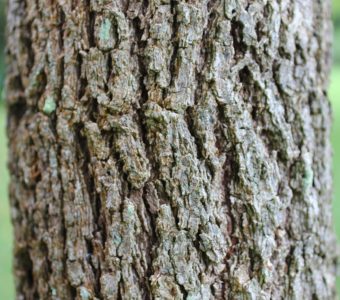
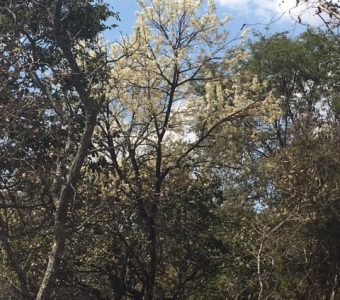
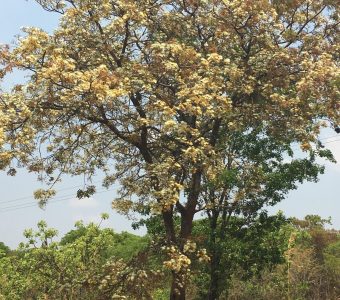
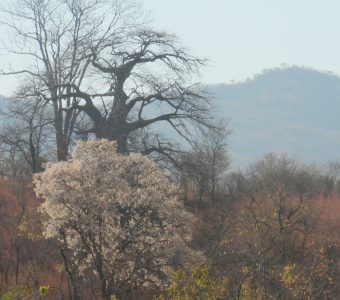
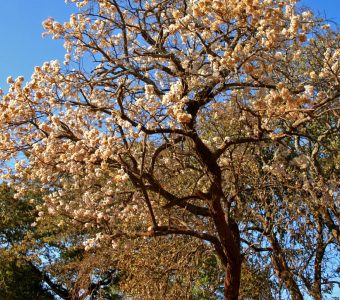
Botanical Name: Dombeya rotundifolia (Hochst.) Planch.
Common Name: Common Wild Pear.
Plant Family: Sterculiaceae
Origin: Africa
References: Coates Palgrave p.711, Joffe p.75, Venter p.272. S.A. No. 471, Zimb. No. 687
Description: A shapely neat, small, deciduous tree usually occurring over wide range of altitudes. Bark is dark brown, and deeply fissured leaves broad and ovate, leathery with a pinking tinge when young. Profusion of white flowers appear before the leaves.
Features of Particular Interest: One of the earliest spring flowers forming conspicuous patches of white, flowers carry abundant nectar and pollen that lure pollinators. Dry flowers remain on tree for a long time and may be used for flower arrangements.
Height and Spread: 4 – 5m in height, 2-5m spread.
Periods of Interest:
Leaf: September to May.
Flowering: August to October.
Fruiting: November to December.
Cultivation
Soil and Moisture:
Aspect: Prefers full sun.
Hardiness: Frost, fire and drought resistant. .
Maintenance and Pruning: D. rotundifolia is fast growing under garden conditions between 1 – 1.5 m a year.
Propagation: Germinates quickly from fresh seed in September. Easier to find seedling in the bush and transplant.
Problems and Drawbacks: None.
Use and Associated Planting: D. rotundifolia is an attractive garden tree great for small gardens, drives, avenues, and streets. Can also a specimen tree in the lawn and should be planted near contrasting flowering plants such as the reds of Erythrina abysinnica or E. lysistemon as they flower together. Makes a good bonsai specimen.
Notes: A member of the cocoa and cola family.
